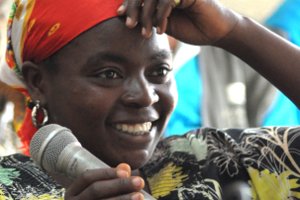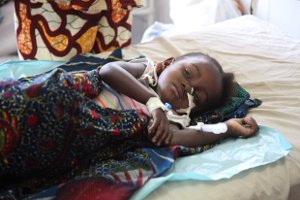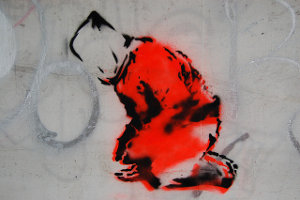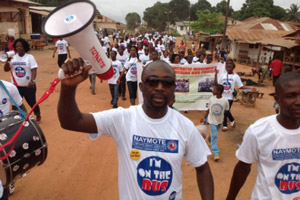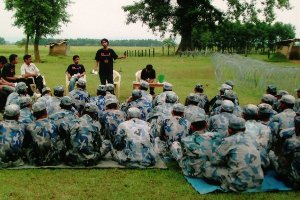Latest research
Setting the post-2015 development compass: voices from the ground
The fresh perspectives from participants offer unexpected insights and challenge assumptions about what policies work, and for whomSetting the post-2015 development compass, from CAFOD, aims to provide an insight into the experiences, aspirations, and priorities of poor and marginalised people. The intention of the report is to inform the ongoing debate around post-2015, by highlighted the voices people on the ground.
Advancing the prospects for peace: 20 years of civil peacebuilding in the context of the Nagorny Karabakh conflict
Taken together, [these reports] paint a picture of how the peacebuilding community itself assesses its role in transforming the conflict, looking back from the present.Advancing the prospects for peace, from International Alert, looks at how local peacebuilders working on the Nagorny Karabakh conflict, perceive peacebuilding efforts in their context. The study both looks back at the 20 year history of civil society peacebuilding in Nagorny Karabakh, and forward, to how civil society efforts to transform the conflict can be improved.
Sensing and shaping emerging conflicts
Monitoring and analysis of media, such as text, video, images, and audio, can yield valuable insights in developing strategies to mitigate or prevent emerging conflicts. Sensing and communication technologies will improve the detection of impending violent conflict and the options for response to such conflicts.Sensing and shaping emerging conflicts, from USIP, is a summary of a USIP-organised workshop examining the potential use of communications technology in conflict environments. The publication provides an overview of the discussions and issues around how real time information can not only give a picture of emerging conflict, but also enable effective interventions.
Measuring conflict exposure in micro-level surveys
Reconstruction policies in particular must build on local conflict legacies, taking into consideration how people were affected by war and violence, for example through death, displacement, disability, fear, asset loss or market breakdown. In essence, each person may experience a conflict differently, leading to different types of conflict exposure even within families or villages.Conflict affects different people in different ways, and precisely how they are affected has important implications for how to overcome legacies of conflict. Measuring conflict exposure in micro-level surveys, from the Households in Conflict Network, proposes a methodology for assessing how individuals and small communities have been affected by conflict, in order to better inform programme design.
Loosening Kony’s grip: effective defection strategies for today’s LRA
Though the LRA has ceased to be a political threat to any regional state, it continues to threaten vulnerable civilians across a large swath of Africa. The coming months represent a critical window of opportunity to encourage as many defections as possible before Kony is able to reconsolidate control of the LRA.Loosening Kony’s grip, from Resolve, examines strategies aimed at weakening the Lord's Resistance Army by encouraging LRA fighters to put their weapons and reintegrate back into society. The report looks at what methods have proved most successful, the challenges and obstacles to DDR and how they can be overcome.
Innovative response - Alternative ways of working in Somalia
This new approach uses indigenous knowledge and works within the community to ensure that the support is in line with the socio-political and cultural context of the community ... AWW aims to increase access beyond the secure areas in Somalia, especially for nomadic pastoralists, and form basis for cost effective and conflict sensitive programming with positive and long lasting impact.Innovative response, from Oxfam, looks at the "Alternative ways of working" (AWW) approach to development in Somalia. AWW prioritises the needs and capacities of local communities in order to promote development with a long-lasting impact, and which reaches communities that have traditionally been difficult to reach.
From the blog
Where are the best new ideas and groups in peacebuilding emerging?
By Ruairi Nolan: In June we launched the competition ‘Tomorrow’s Peacebuilders’ for the best emerging peacebuilders, any where in the world. Today we are pleased to announce the shortlist. Read more »
Time to stop dismissing the DR Congo as beyond hope
By David Thomson: David Thomson, from World Vision UK, highlights the benefits of INGOs partnering and working closely with local organisations in a country like the DR Congo. Read more »
The role of memory in post-genocide Rwanda
By Katherine Conway: The role of memory in guiding the current narrative of Rwandan society, institutions, and reconciliation. Read more »
Sexual violence in the global war on terror
By Kirthi Jayakumar: Despite not being a traditional armed conflict, Kirthi Jayakumar argues that sexual violence has been rampant in the global war on terror. Read more »
The Liberian Bus project: driving change for young Liberians
By Nat B. Walker: As a result of years of conflict, Liberian youths are marginalised and vulnerable. To tackle this problem, Naymote has launched The Liberian Bus Project. Read more »
Peacebuilding in Nepal: Local First logic
By Dipendra Tamang: Dipendra Tamang discusses the dangers of foreign donor influence in peacebuilding and why it is important to take a ‘local first’ approach to conflicts not just in Nepal, but worldwide. Read more »

Monthly Newsletter
A monthly selection of the best new research and resources on local peacebuilding worldwide, as chosen by Insight on Conflict.
Read more from Monthly Newsletter



